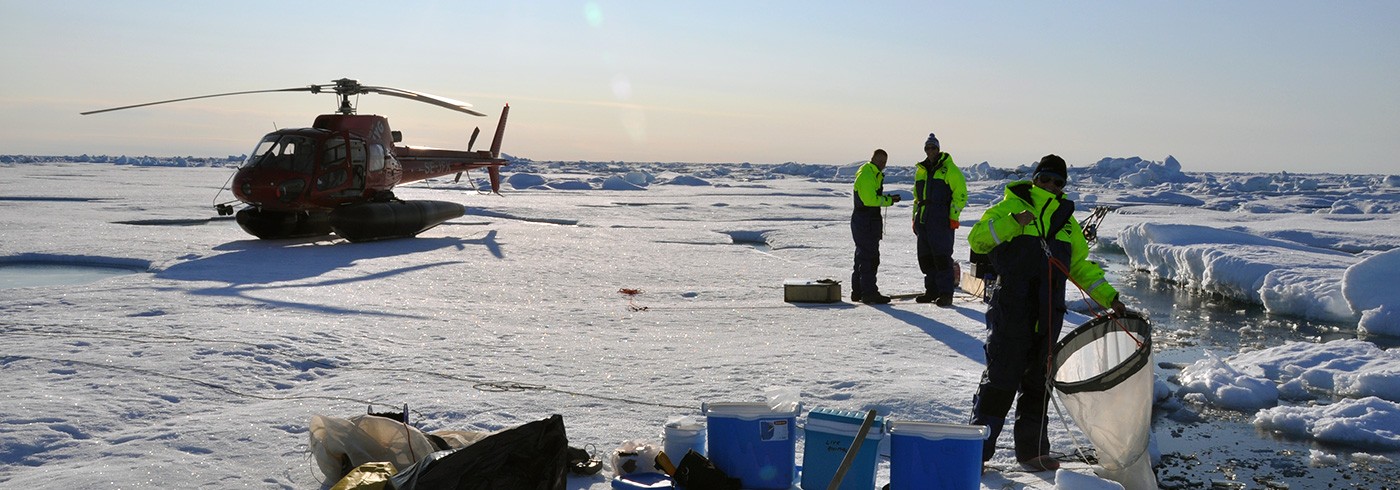Structuring of the sea ice environment by dynamic ice-algae activity
2 August 2012 - 11 September 2012
Bottom surface of ice core with visible patches of algae. The lower 2 cm of an ice core has been sectioned from the core and mounted bottom upwards in the circular frame used to position it for imaging. Photo: Lars Chresten Lund-Hansen
The contribution of ice algae to the global environment is difficult to estimate, but they may be responsible for up to 5% of all photosynthesis and primary production.
The aims of our work on the LOMROG III cruise were to determine:
- gradients in algal biomass and adaptation to light quantity and quality along the surface light transect of the Arctic Ocean,
- the transmission and attenuation of light through the snow-ice column and how this is related to variations in snow cover, ice thickness, and the spectral composition of light below the ice,
- what pigments Arctic Ocean ice algae are using for light absorption in photosynthesis, and
- the spatial distribution of algae in sea ice in relation to ice structure and antifreeze protein production.
Ice cores and seawater were collected daily from 2 August to 11 September 2012.







